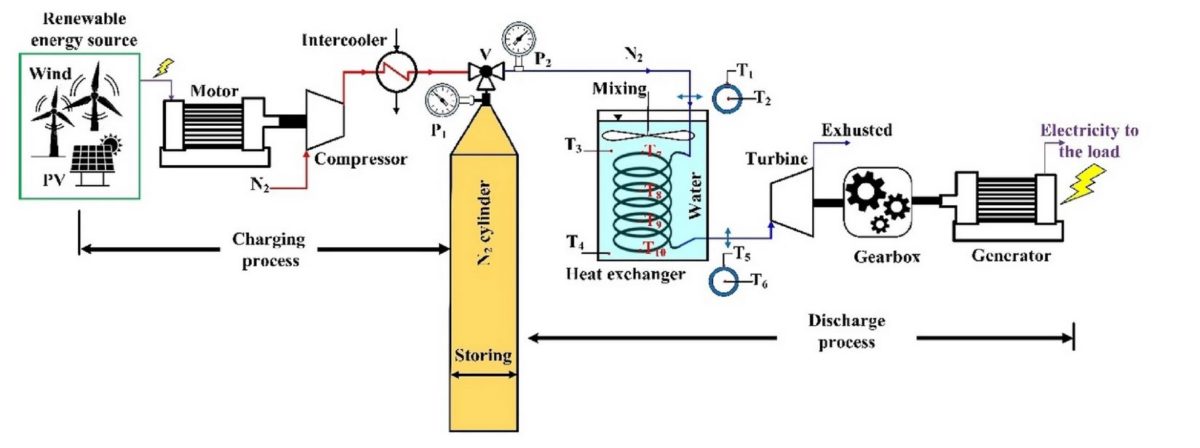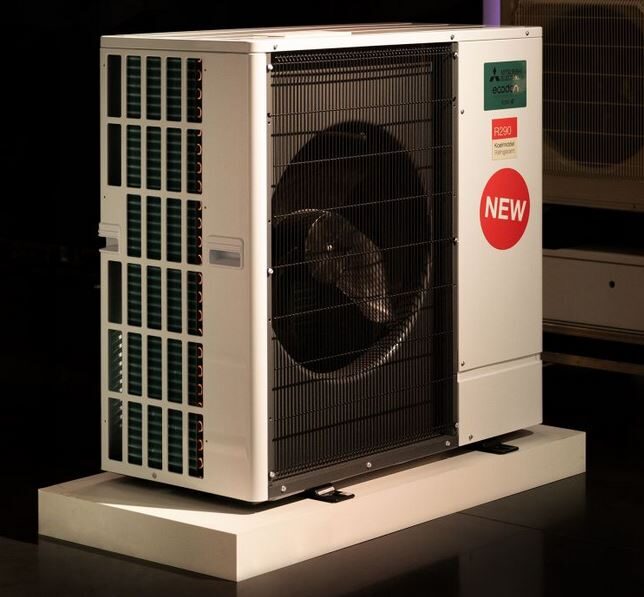Scientists at the University of Sharjah in the United Arab Emirates have developed a way to use compressed air energy storage (CAES) for cooling purposes in hot climates, where electricity demand is significantly driven by air conditioning.
“The proposed cooling system in this research stemmed from a system for compressed air energy storage,” researcher Abdul Hai Al-Alami told pv magazine. “The system operates by routing excess energy from solar PV farms to an air compressor that fills out storage tanks to high pressures at around 20 to 30 bar. Whenever energy is needed, during times of absence of solar radiation, the air is released into an air turbine that is coupled to an electric generator.”
The researchers described the system as an ancillary installation to an existing compressed air energy storage setup and said that its activity is comparable to that of a commercially available compression cooling air conditioner. It uses commercially available air sources, pre-filled nitrogen tanks with a 50 L nominal capacity and a nominal pressure of 3,000 pounds per square inch.
“Since nitrogen makes up 79% of air, the gas properties are taken for nitrogen to simulate the behavior of air,” they said.
For the charging phase, the system relies on cylinders linked to a 9-horsepower air motor that is used to convert the potential energy of the compressed air and kinetic energy in the flowing air to mechanical rotational motion. The air motor is coupled to a 1:8 ratio gearbox, which is coupled to a 3.5 kW permanent magnet electrical generator.
“To resemble the actual performance and response to loads, the generator powers two 100 W lamps, a drill of 250 W, and a vent fan of 6 W rating and a total supplied current of 1.7A,” said the scientists.
For the discharging phase, the system uses a 9.2-meter serpentine polyethylene to carry the air into pneumatic devices, the pipe is then rolled into four 40 cm concentric loops that are submerged in a 23.6-liter water bath held in a container measuring 53 cm in diameter.
The scientists said the system can produce chilled water for air conditioning purposes at a temperature of around 5 C. They also said that the energy storage process showed a 4% higher roundtrip efficiency by employing the air heating by chilling the water for air conditioning purposes.
“In hot climates, this system would fit perfectly, not only to replace battery storage, but also to provide air conditioning through the chilled water circulation,” Hai Al-Alami said. “The compressed air energy storage system also had a 26% efficiency boost, which is a great advantage. Add to this that the cooling provided by the expanding air significantly reduces the energy demand imposed by air conditioning compressors, since the only requirement is a heat exchanger to harness the cooling effect from the expansion, which although undesirable for the storage part of the system, is a great side effect of the process from an air conditioning vantage point.”
The research group presented the system in “Cooling potential for hot climates by utilizing thermal management of compressed air energy storage systems,” which was recently published in Scientific Reports.
“The proposed system is cheap and requires no special refrigerants or power intense compressors,” the scientists concluded.
This content is protected by copyright and may not be reused. If you want to cooperate with us and would like to reuse some of our content, please contact: editors@pv-magazine.com.




3 comments
By submitting this form you agree to pv magazine using your data for the purposes of publishing your comment.
Your personal data will only be disclosed or otherwise transmitted to third parties for the purposes of spam filtering or if this is necessary for technical maintenance of the website. Any other transfer to third parties will not take place unless this is justified on the basis of applicable data protection regulations or if pv magazine is legally obliged to do so.
You may revoke this consent at any time with effect for the future, in which case your personal data will be deleted immediately. Otherwise, your data will be deleted if pv magazine has processed your request or the purpose of data storage is fulfilled.
Further information on data privacy can be found in our Data Protection Policy.